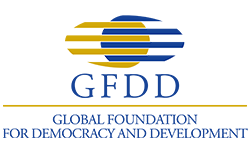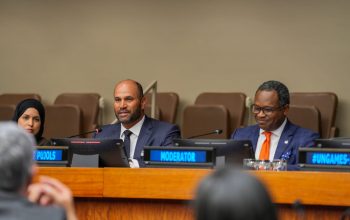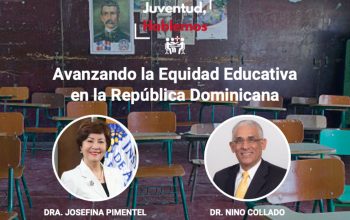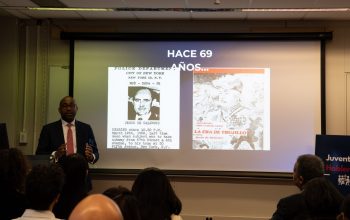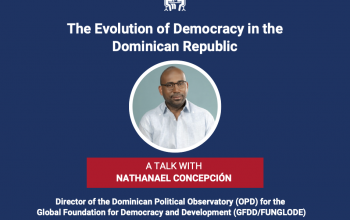news
“The Great Challenge of Political Parties”, an article by Dr. Leonel Fernández
August 8, 2017
Since the disappearance of the Trujillo dictatorship, one of the difficulties affecting Dominican political parties has been the maintenance of their internal unity.
Two months after the Trujillo assassination in May 1961, the Dominican Revolutionary Party (PRD), formed in exile, sent a delegation made up of Angel Miolán, Nicolás Silfa and Ramón Castillo, its most renowned leaders, to begin the organizational work of establishing the party in the Dominican
Republic.
However, a short time after, Nicolás Silfa detached himself from the party’s ideology to create his own political party, the Partido Revolucionario Dominicano Auténtico (Authentic Dominican Revolutionary Party); and Ramón Castillo – who for his political maneuvers quickly became known as “Món el Loco” – did the same.
After the revolution of April 1965 and the election of Dr. Joaquín Balaguer in 1966, new
detachments and divisions arose in the parties and political organizations of the Dominican Republic.
On the left, a new generation emerged that created the Dominican Communist Party (PCD) from the Marxist old guard-led Dominican Popular Socialist Party (PSP).
The 14th of June Movement engendered a stampede toward the Movimiento Popular Dominicano (Dominican Popular Movement – MPD) and the Partido Comunista de la República Dominicana (Communist Party of
the Dominican Republic – PACOREDO), while at the same time a new current known as the “Red Line of the 14th of June” took shape in its interior.
Later, the Dominican Left would include organizations such as the Anti-Imperialist Patriotic Union (UPA); the Dominican Workers Party (PTD); the Partido Comunista del Trabajo (Communist Workers Party – PCT); the Movimiento de Izquierda Unida (United Leftist Movement – MIU); the Liga Socialista (Socialist
League); and the Force of the Revolution (FR).
PRD, Reformers, and the PLD
However, it is in the Dominican Revolutionary Party where the largest divisions have been produced in the history of Dominican political parties. Since its foundation in Cuba in 1939, up to ten internal ruptures have been verified in the party.
But from its installation in the Dominican Republic in 1961 to the present, some of the most significant
conflicts to shake the ranks of the party were the departure of Professor Juan Bosch and a group of party leaders to form the Dominican Liberation Party (PLD) in 1973 as well as the breakdown of relations between Dr. José Francisco Peña Gómez and Jacobo Majluta, which gave rise to two political organizations: the Social Democratic Institutional Bloc (BIS) and the Partido Revolucionario Institucional (Institutional Revolutionary Party – PRI).
Two subsequent disputes of
importance to the PRD were the expulsion of Hatuey de Camps from its ranks in 2004, who would later go on to form the Revolutionary Social Democratic Party (PRSD); and finally the irreconcilable differences between members of its upper echelons which gave birth to the Modern Revolutionary Party (PRM) in 2014.
As for the Social Christian Reformist Party (PRSC), not even at the pinnacle of his glory could Dr. Joaquín Balaguer avoid divergences and rifts in his political
party.
So it was that in the presidential elections of 1970 Balaguer saw himself challenged by the then-Vice President and current leader of the PRSC, Francisco Augusto Lora, for his party’s support in his presidential candidacy.
In the end, Lora abandoned the rank and file of the party and created his own political entity, the Movimiento de Integración Anti reeleccionista (Movement for Democratic Integration against Reelection – MIDA), which
subsequently became the principal rival of Balaguer’s party in the elections later that year.
Fernando Álvarez Bogaert, after having accompanied Dr. Balaguer as a Vice Presidential candidate in the polling of 1982 as well as the elections of 1986 and 1990, would later see his hopes dashed of being a reformist candidate for presidency of the nation.
Because of this, he left the ranks of the party to create the Partido de la Unidad Democrática
(Democratic Unity Party), which established an alliance with the PRD in 1994 when Dr. Peña Gómez boasted for a second time the backing of the PRD in his presidential candidacy.
After the disappearance of Dr. Balaguer from the national political scene, his followers fractured into distinct currents or groups, engendering ex-Vice President Carlos Morales Troncoso’s Comisión Presidencial (Presidential Commission); Senator Amílcar Romero’s Partido
Reformista Popular (People’s Reformist Party); Eduardo Estrella’s Partido Dominicanos por el Cambio (Dominican Party for Change); Senator Amable Aristy Castro’s Partido Liberal Reformista (Liberal Reformist Party); as well as other groups and factions which are currently vying for national control.
For its part, the Dominican Liberation Party (PLD) is a case worthy of study. It has been, thus far, the only emergent political force which has
been able to consolidate itself over time.
Notwithstanding, after its first electoral participation in 1978, it experienced a seismic movement in its interior which led to the departure of an important group of its leaders – some of which would later return to the party.
But, from then on, a pattern of conduct was established wherein after each electoral loss, the expulsion or resignation of leaders of internal groups and currents led to internal
fracture.
This process continued following the elections of 1986, 1990, and 1994. It was only after the elections of 1996 – when the PLD achieved its first great electoral victory – that its internal bleeding could be stopped. And although there have been moments of obvious differences between members of its top leadership in the twenty years following this electoral triumph, they have never put the unity of the party in danger.
The Challenge
of the Future
That said, since the constitutional reform of 1994 which separated presidential, congressional, and municipal elections into distinct periods, Dominican political parties have found themselves mixed up in a dynamic that in place of contributing to their internal unity, has been one of the sources of their weakening.
In the last twenty years, since 1996 to the present, there have been ten elections in the Dominican Republic. But each one
of these elections has been preceded by internal processes of candidate selection.
This means that there have actually been twenty elections, counting internal and external ones, instead of the aforementioned ten to which the parties have had to subject themselves during the last two decades.
This has been devastating for the political organizations of the Dominican Republic. During all of this time the main focus of the parties has been on setting up
races between their own members which at times end in wounds that don’t heal.
Additionally, participating in political races that don’t achieve the expected results, ending in frustration and bitterness, sows the seeds of discord which look to identify those to blame for the defeat, and provokes new internal fissures.
Since 2016, political parties, however, find themselves in a new reality. For the first time in twenty years they
will not have to subject themselves to such incessant and exhausting elections.
Now they will have the time, peace, and serenity to refocus on their principles and values, to reconnect with their bases, and renew themselves by connecting with different social groups and classes.
The parties should understand that with global transformations, internal demographic changes, the use of modern digital communication technologies, and new methods of social
mobilization, there are new forms of political activity to which they will have to adapt or otherwise, perish.
For the majority of political parties, their main challenge will be in discovering not only their own capabilities but also their weaknesses – those which for years have made them fall into a cycle of adversities, frustrations, and failures – to finally be able to overcome them.
For the Dominican Liberation Party, which has been, in full
democracy, the dominant political force in the last two decades, its challenge is the reverse of the others. It needs to learn to manage its victories.
To achieve this, each one of its members urgently needs to understand something very simple; that in politics the needs of the people should always be placed before individual aspirations.
In understanding this simple truth, which seems almost juvenile, we are sure that the star of the PLD will continue
to brighten the national political horizon for many more years.
